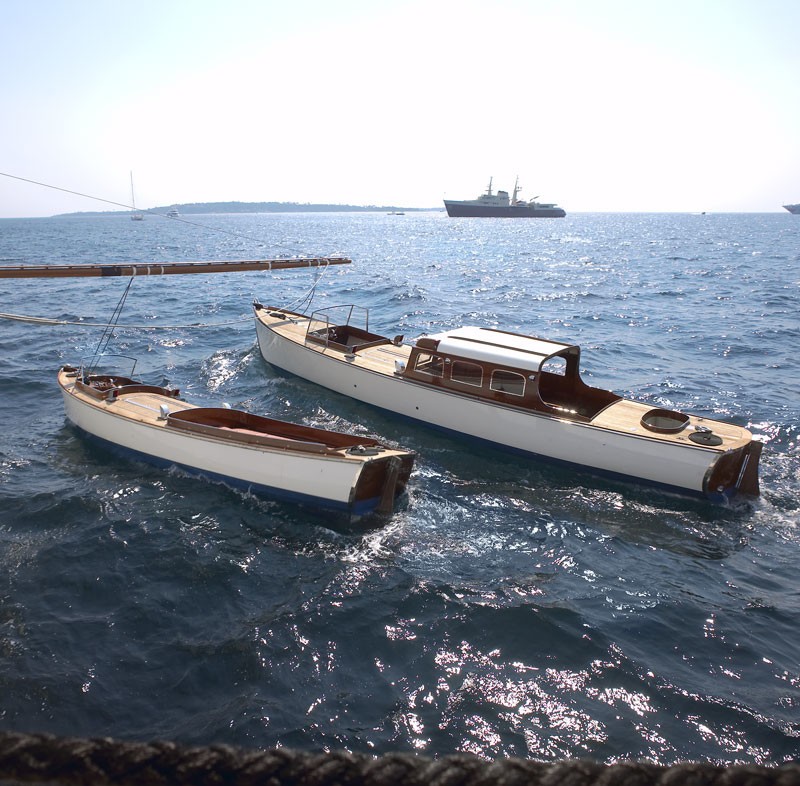- Published on June 3, 2020
I have started a previous article by pointing out that the use people made of “luxury yachts” in the roaring twenties is fundamentally different from the expectations of the modern owners and guests.
A small yacht in the pre-war years would have one tender, often just a rowing dinghy. The main function of the tender is to bring guests ashore when anchored, or allow crew to bring in fresh provisions.
On larger yachts, the tender could double as a life boat then, maybe, there would be a second boat, more “finished” and possibly fitted with an engine, to be used as a lifeboat and as the shore taxi. They still would be noticeably smaller than a modern Riva. Only very large yachts had big tenders.

The notion of water sports was not an issue, so fast and light crafts were not required. Guest tenders on very large yachts were roomy, heavy and slow. Some yachts may have carried one fast runabout for the owner. A very large yachts such as Delphine originally had a proper racing boat next to her owner’s 35’6” cabin launch, her two 25’ crew tenders and her four life boats.

First order of priority for today’s owner, next to access to shore, is a fast tender for water ski and wakeboarding and some jet skis or wave runners. Obviously, the look and weight of the older type of classic tenders do not fit the bill. Fortunately, most classic yachts have a large foredeck where a crane can be discreetly fitted and tend to light craft. A semi rigid tender, or RHIB, is often used as the crew tender of general service boat, as well as the watersport support craft.

On the smaller classics, there could be room for only one boat on deck. Very often, the modern alternative will be chosen, favouring function over looks. Most larger yachts can still have one or two nice tenders with a period look. Those tenders can be modern builds with more space and more functionality than original period ones.
Over the years, additional enclosed deckhouse space was added to most original classics reducing available deck areas for tender storage. Nero, a modern replica, has a very nice limo tender stored between side decks. Recent technology equipment is used to bring it to the water without sacrificing open deck areas. That tender makes a way more efficient use of volume than actual period craft.

We shall expand this discussion with dedicated articles on storage of tenders as well as the types of boats used.
What tenders would you have on your classic yacht?

